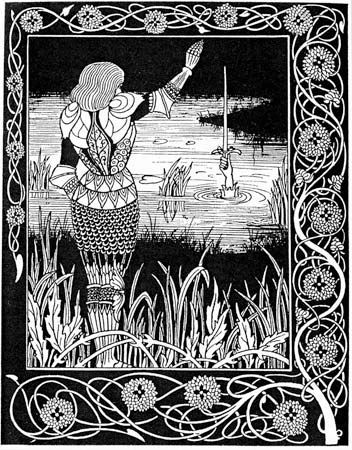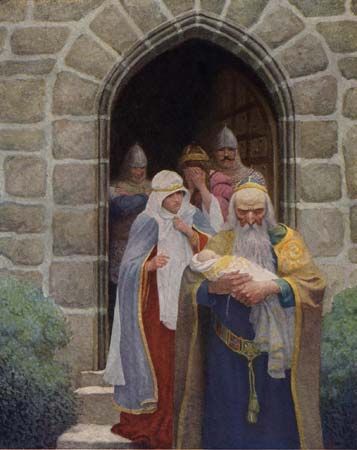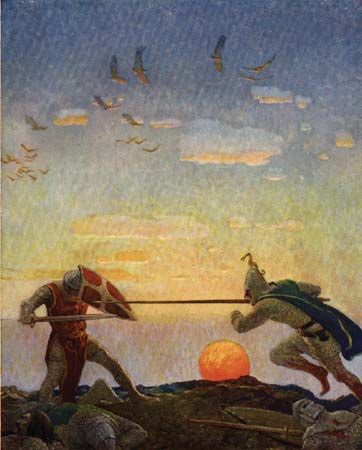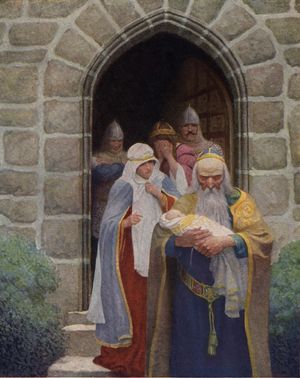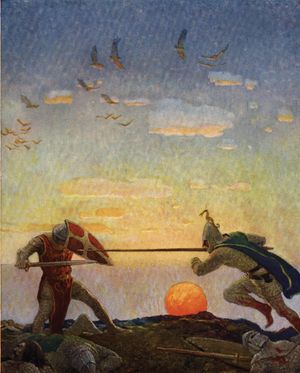Arthurian legend
Arthurian legend, the body of stories and medieval romances, known as the matter of Britain, centring on the legendary king Arthur. Medieval writers, especially the French, variously treated stories of Arthur’s birth, the adventures of his knights, and the adulterous love between his knight Sir Lancelot and his queen, Guinevere. This last situation and the quest for the Holy Grail (the vessel used by Christ at the Last Supper and given to Joseph of Arimathea) brought about the dissolution of the knightly fellowship, the death of Arthur, and the destruction of his kingdom.
Stories about Arthur and his court had been popular in Wales before the 11th century; European fame came through Geoffrey of Monmouth’s Historia regum Britanniae (1135–38), celebrating a glorious and triumphant king who defeated a Roman army in eastern France but was mortally wounded in battle during a rebellion at home led by his nephew Mordred. Some features of Geoffrey’s story were marvelous fabrications, and certain features of the Celtic stories were adapted to suit feudal times. The concept of Arthur as a world conqueror was clearly inspired by legends surrounding great leaders such as Alexander the Great and Charlemagne. Later writers, notably Wace of Jersey and Lawamon, filled out certain details, especially in connection with Arthur’s knightly fellowship (the Knights of the Round Table).
Using Celtic sources, Chrétien de Troyes in the late 12th century made Arthur the ruler of a realm of marvels in five romances of adventure. He also introduced the themes of the Grail and the love of Lancelot and Guinevere into Arthurian legend. Prose romances of the 13th century explored these major themes further. An early prose romance centring on Lancelot seems to have become the kernel of a cyclic work known as the Prose Lancelot, or Vulgate cycle (c. 1225).
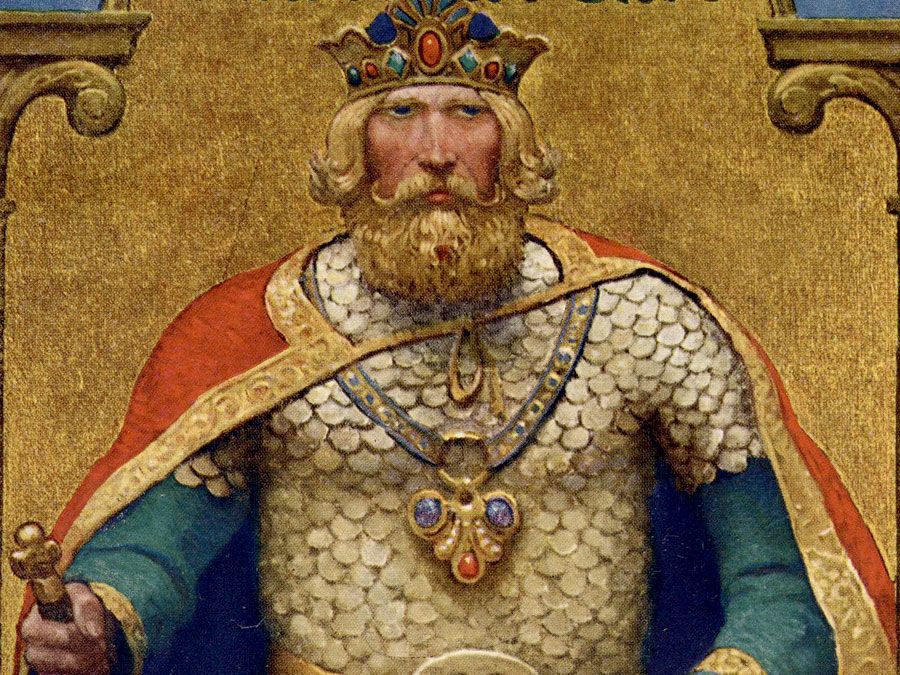
The Lancelot theme was connected with the Grail story through Lancelot’s son, the pure knight Sir Galahad, who achieved the vision of God through the Grail as fully as is possible in this life, whereas Sir Lancelot was impeded in his progress along the mystic way because of his adultery with Guinevere. Another branch of the Vulgate cycle was based on a very early 13th-century verse romance, the Merlin, by Robert de Boron, that had told of Arthur’s birth and childhood and his winning of the crown by drawing a magic sword (see Excalibur) from a stone. The writer of the Vulgate cycle turned this into prose, adding a pseudo-historical narrative dealing with Arthur’s military exploits. A final branch of the Vulgate cycle contained an account of Arthur’s Roman campaign and war with Mordred, to which was added a story of Lancelot’s renewed adultery with Guinevere and the disastrous war between Lancelot and Sir Gawain that ensued. A later prose romance, known as the post-Vulgate Grail romance (c. 1240), combined Arthurian legend with material from the Tristan romance.
The legend told in the Vulgate cycle and post-Vulgate romance was transmitted to English-speaking readers in Thomas Malory’s late 15th-century prose Le Morte Darthur. At the same time, there was renewed interest in Geoffrey of Monmouth’s Historia, and the fictitious kings of Britain became more or less incorporated with official national mythology. The legend remained alive during the 17th century, though interest in it was by then confined to England. Of merely antiquarian interest during the 18th century, it again figured in literature during Victorian times, notably in Alfred Tennyson’s Idylls of the King. In the 20th century an American poet, Edwin Arlington Robinson, wrote an Arthurian trilogy, and the American novelist Thomas Berger wrote Arthur Rex (1978). In England T.H. White retold the stories in a series of novels collected as The Once and Future King (1958). His work was the basis for Camelot (1960), a musical by Alan Lerner and Frederick Loewe; a film, also called Camelot (1967), was derived from the musical. Numerous other films have been based on the Arthurian legend, notably John Boorman’s Excalibur (1981) and the satirical Monty Python and the Holy Grail (1975).

